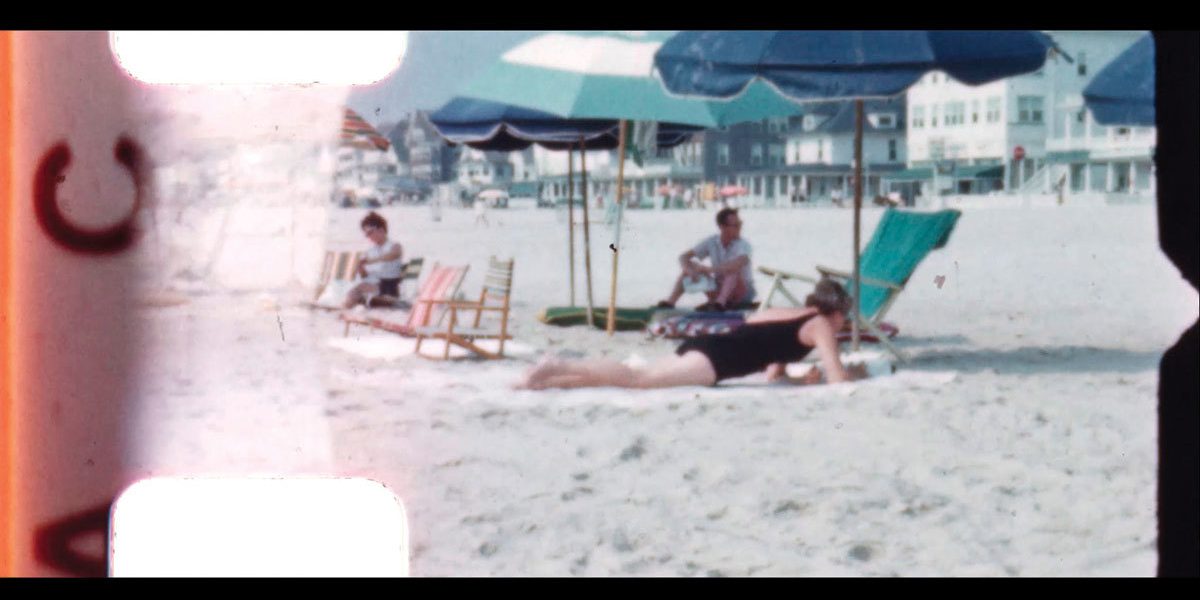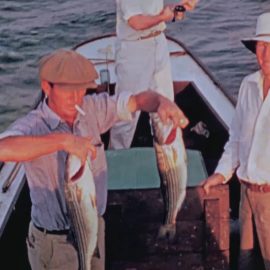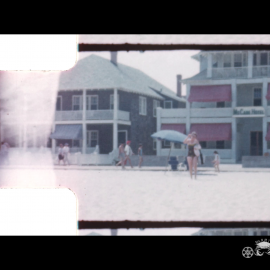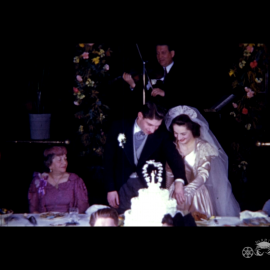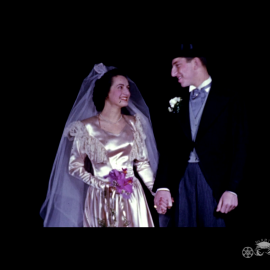Arts & Culture
Found Art
Scenes from Normal's Books & Records and the Baltimore American Indian Center.
Found Art
East 31st Street
October 14, 2017
“There’s no such thing as a bad home movie.”—John Waters.
The home movies screened at Normal’s Books & Records tonight include the expected clips of a 1950s-era Ocean City vacation and an Irish-Catholic wedding reception of the same vintage. There’s footage of a crammed 1983 East Baltimore rowhouse Christmas, a swinging sermon from a local black church, and shots of a sister and brother playing in their Rogders Forge backyard, which begins in rather pedestrian fashion until the boy dons a Fidel Castro-inspired beard and Cuban military-style cap, picks up a toy rifle and chases after his sister.
Some of the footage screened is from professionally archived sources, others are found on eBay and the like, and some are courtesy of audience members who have brought along their own home movies.
“Hey, it was 1959,” the grown-up would-be revolutionary explains from the back of the crowd amid raucous laughter. “Castro was a hero in the U.S.”
Hosted locally by the Mid-Atlantic Regional Moving Image Archive (MARMIA), Home Movie Day is an annual event that’s been held around the world since 2002. Among other efforts, the preservation nonprofit recently began digitizing historic footage from WJZ-TV.
Also on hand is Jasmyn Castro (no relation to Fidel, needless to say), media conservation and digitalization specialist with the National Museum of African American History & Culture, who is screening home movies shot by black families in Washington, D.C. and Baltimore. Those films, mostly from the 1960s and 1970s, capture everyday African-American family life—at home, at their local schools, at wedding receptions-—that simply was not represented on television or by Hollywood at the time.
“Home movies hold all kinds of finds and provide context that documents life in the region the way it was lived by everyday people,” says MARMIA president Siobhan Hagan, before a lively crab feast/day camping adventure on the Chesapeake Bay from the early 1960s appears on screen.
“You can practically smell the Natty Boh, cigarettes, and hairspray,” someone quips.
Not all home movies are fun. There is also amatuer footage shot during the 1968 Baltimore riot.
One of the truly gorgeous films is 16mm color footage from The Johns Hopkins University Medical Archive of a physician’s fishing expedition on the Chesapeake in the early 1940s. The wooden boats and crisp white sails—not to mention the well-attired men sporting fedoras as they cast their lines—appear to be from another epoch altogether, as does the sterling blue Bay, with its then-plentiful rockfish seemingly jumping into the boat. “Otherwise,” deadpans JHU visual projects archivist Tim Wisniewski of the school’s medical film archive, “our footage is mostly surgeries.”
One of the first home movies of the evening includes upper-deck footage from the last Opening Day at Memorial Stadium in 1991, a potentially auspicious afternoon that proved anything but. One-term vice president Dan Quayle threw out the first pitch that afternoon before the O’s lost 9-1—the first of 95 defeats that season.
“My mom had two rules when we went to Memorial Stadium,” Hagan says, narrating the clip as her 6-year-old self eyes a trayful of pink cotton candy passing on screen. “You can’t go to the bathroom while the Orioles are at bat and no cotton candy. Ever.”
Homeland
Broadway
October 9, 2017
Inside the Baltimore American Indian Center, a sign touts the cultural classes held every Tuesday night, while noting the remarkable resiliency of the native people of the Americas.
We are still here We are not going away We have pow wows We have parts of our culture It is still here We still make our jewelry We still make our leather
Tonight, however, the center, which has served the metro area’s indigenous population—more than 8,300, according to the last census—since the late 1960s, is filled for a rally and petition-signing drive in support of renaming Christopher Columbus Day to Indigenous Peoples’ Day.
Last year, notes organizer Rebecca Nagle (whose family includes Cherokee ancestors), City Councilman Brandon Scott introduced legislation that would’ve placed Baltimore among other cities, including Los Angeles, Denver, Seattle, and Albuquerque, which have renamed the holiday. But the “Indigenous Peoples’/Italian Americans Day” bill did not pass.
Jennifer Hunt, a Baltimore County mother of two, starts the evening with an emotional reading of Columbus and his men’s well-documented cruelty against native peoples, including execution, rape, dismemberment, forced work, and sale into European slavery.
“I wasn’t sure that I’d be able to get through it,” says Hunt, who is Choctaw, referring to her text, which includes entries from Columbus’ own journal and testimony from a contemporary Spanish witness to the atrocities. “I knew children would be here. But my husband, who is African American, said people need to know the truth. All I learned in school was same thing as everyone else: ‘In 1492, Columbus sailed the ocean blue.’”
Later, she notes that it was her Choctaw grandfather who came to Baltimore after joining the Coast Guard. She says that despite brutal federal policies that removed Native Americans from their land and pushed them onto reservations, “joining the military is often how you try to get out of poverty.” In fact, Hunt adds, a higher proportion of Native Americans serve in the U.S. military than any other ethnic group.
She also adds that she certainly doesn’t hold any animosity toward Italian Americans, particularly those in nearby Little Italy—she just takes issue with the veneration of Columbus.
“I love Sabitino’s and their Bookmaker Salad,” Hunt says with a smile. “We go there all the time.”
